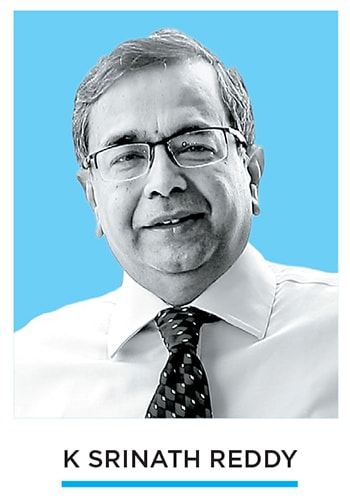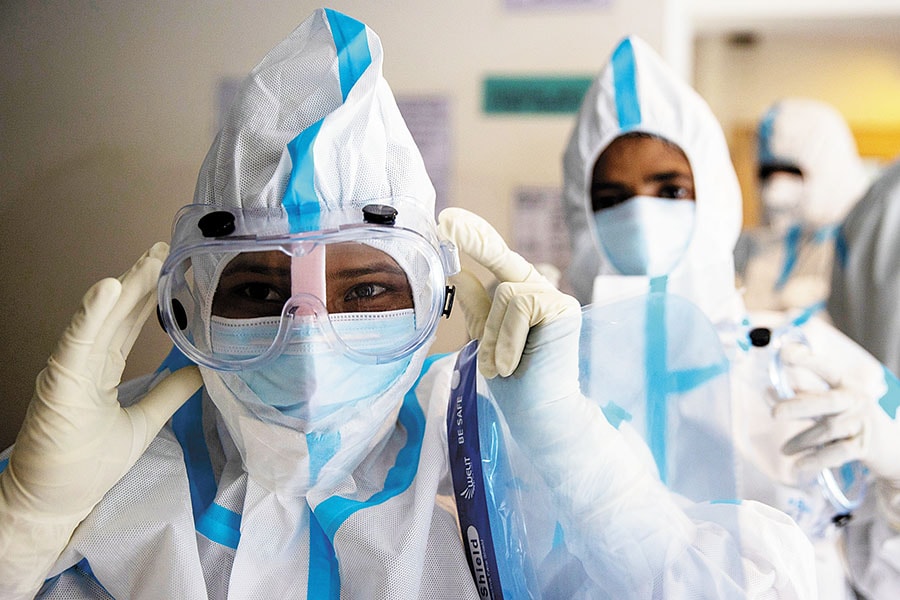
Lessons in public health we cannot afford to forget quickly
While India needs more doctors, technology-enabled community health workers, nurses, other frontline workers can perform many primary care functions, liberating us from an entirely doctor-dependent model, K Srinath Reddy, Public Health Foundation President writes
 When the Covid-19 virus landed in India in end-January 2020, accompanying a group of students arriving in Kerala from Wuhan, the world had no inkling that the virus was on a prolonged mission of global conquest. Several parts of the world are reeling from a resurgent virus, even at year-end, and the global economy is on the mat struggling to beat the referee’s count sounded by the International Monetary Fund.
When the Covid-19 virus landed in India in end-January 2020, accompanying a group of students arriving in Kerala from Wuhan, the world had no inkling that the virus was on a prolonged mission of global conquest. Several parts of the world are reeling from a resurgent virus, even at year-end, and the global economy is on the mat struggling to beat the referee’s count sounded by the International Monetary Fund.
India’s case count crossed 10 million on December 18, becoming second only to the USA. However, it must be recognised that India has a large population. Any international comparison must account for differences in population size. India’s case and death counts per million population fall below 13 other countries whose case count crossed one million by December. Indeed, their combined population count falls below India’s, yet their added case and death counts exceed India’s reported figures.
Is this because of undercounting in India? It is likely that cases are undercounted due to low testing rates early on. Even later, the variable mix of nucleic acid tests and rapid antigen tests would have given several false negative results, since the latter have lower sensitivity. The criteria for testing too differed across time periods and many asymptomatic persons may not have been tested. At the population level, viral exposure rates can be compared only through antibody tests in random samples of the whole population to capture both symptomatic and asymptomatic infections.
Despite some false positive and false negative results there too, such surveys offer the best possible estimate of infection in any population. Unfortunately, many countries do not conduct such surveys, busy as they are in fighting to control the active case numbers. Even in India, the last nationwide survey of anti-Corona antibodies was conducted only in August 2020, yielding a prevalence rate close to 7 percent in the general population at that time.
Deaths, on the other hand, are easier to ascertain though the assignment of cause may be problematic. While even within-hospital deaths can be misclassified, especially when there are pre-existing health disorders which increase the risk of severe Covid-19, out-of-hospital deaths are difficult to classify as diagnostic tests would be unavailable in most. However, the noise to signal ratio is likely to be more constant for the death count than for the case count. Therefore, a declining trend in reported cases of Covid-19 deaths is a reliable indicator of the course of the pandemic, even if we quibble over the actual number of deaths.
However, there is no room for complacency. Our under-resourced health system has been challenged and stretched. Concentrated attention to Covid-19 has diverted health services from maternal and child health as well as non-communicable diseases and mental health, which are the highest contributors to our disease burden. Even as the epidemic seems to abate in spread and severity by the end of 2020, the task of vaccinating the large population will demand the attention and energy of the health system in 2021.
(This story appears in the 30 November, -0001 issue of Forbes India. To visit our Archives, click here.)
 India has severe shortages of the health workforce. The WHO recommends 44.5 workers per 10,000 people; at present, we have half that number. Image: Shutterstock
India has severe shortages of the health workforce. The WHO recommends 44.5 workers per 10,000 people; at present, we have half that number. Image: Shutterstock




